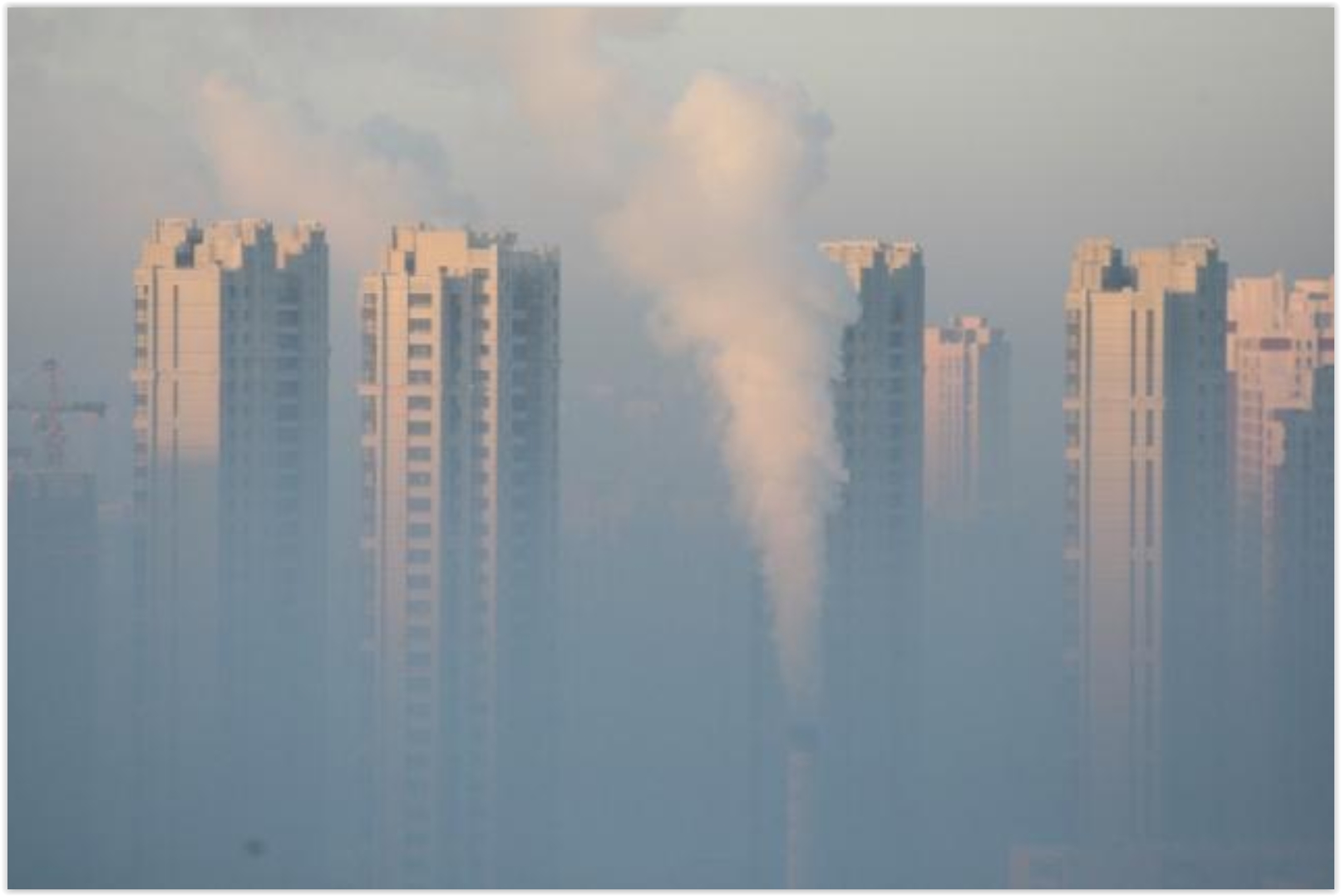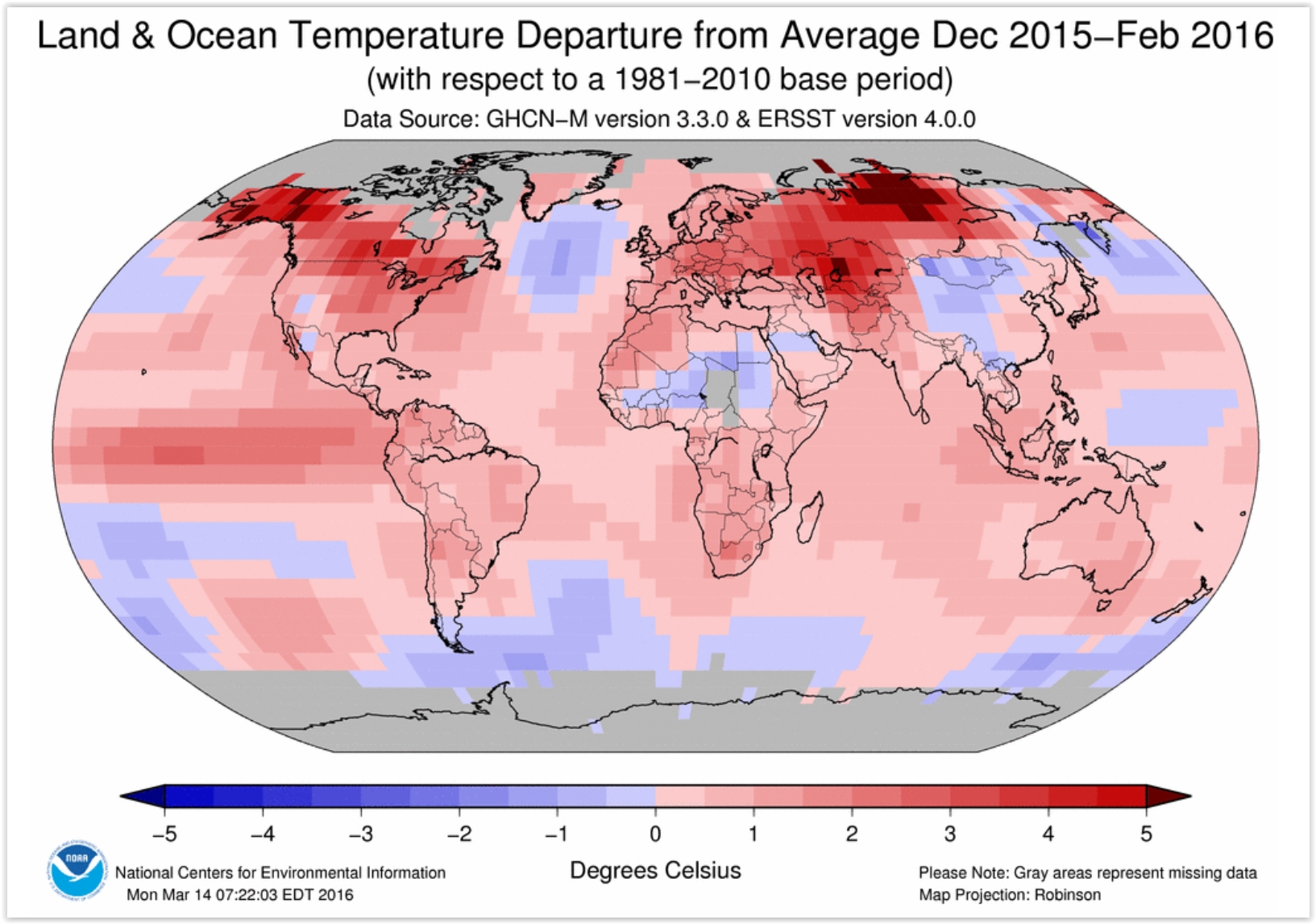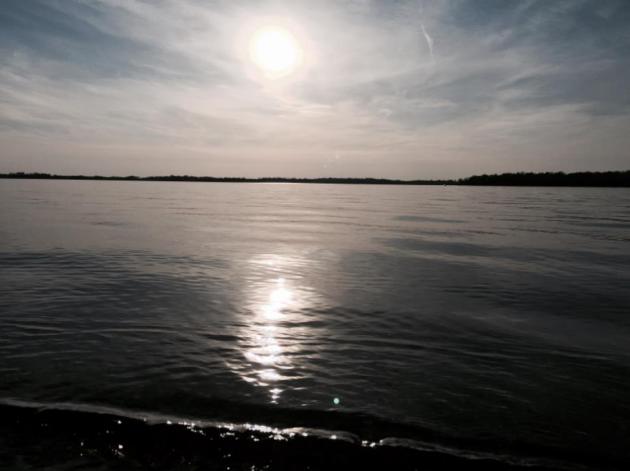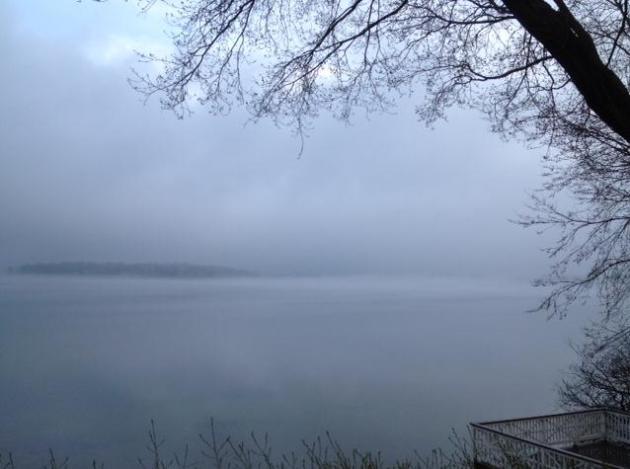51 F. high in the Twin Cities Saturday.
47 F. average high on March 26.
36 F. high on March 26, 2015.
March 27, 1946: A record high of 78 is set at Redwood Falls.
An Easter Wish - Arctic Fun Returns Next Weekend"A
man who was completely innocent, offered himself as a sacrifice for the
good of others, including his enemies, and became the ransom of the
world. It was a perfect act" said Mahatma Gandhi.
May our better angels prevail in the months and years to come.
My
mushy lawn is greening up nicely, the neighbor next door racing to get
his dock in the water. I keep glancing at the calendar, wondering how we
managed to skip a month?
Like an exclamation point at the end of a poorly-worded sentence - one more harsh, quick slap of arctic air reaches Minnesota
Saturday with single-digit wind chills.
By
Sunday
highs may not climb out of the 20s, in spite of a pleading sun. The
good news: it won't stay cold for long - 50s return by the middle of
next week. Deep breaths.
In the meantime the sun peeks out today; 60F will feel like a revelation
Tuesday with a few thunderclaps by nightfall. Cold air comes in two waves, starting
Thursday, with a rerun of early February arriving
Sunday.
Models suggest rapid warming and a few big rain storms the first half of April. Have a blessed Easter.
Quick Slap.
The rumors are true - much colder air plows south of the border late in
the week, but it won't go much below 10-15F, and it won't stay cold for
long. After peaking around 60F Tuesday temperatures Sunday may be
30-40F colder, but 50s return by the middle of next week. Temperature
plot: Aeris Enterprise.
Spring in Retreat Later This Week.
Green lawns and chirping birds give way to a quick punch of cold air
more typical of February by Saturday night and Sunday, but I don't see a
blocking pattern that would cause numbing air to linger for long. A
couple of chilly days, followed by quick moderation by the middle of
next week. A rumble of thunder late Tuesday gives way to steadier,
heavier, stratiform rain Wednesday into Thursday.
A Wet Pattern.
Over 1" of additional rain may fall late Tuesday into Thursday; another
1-2" possible in about 2 weeks, if you believe GFS data. No heavy
accumulating snow is brewing for MSP. Praise God.
Restoring Your Faith in Spring.
After a quick cold snap next weekend temperatures mellow into the 40s
and 50s next week; NOAA's GFS guidance pulling 60s into the metro area
in about 2 weeks.
Past 12 Months: Warmest in State History. Dr. Mark Seeley explains in this week's installment of
Minnesota WeatherTalk: "...
Statewide
temperatures so far this month would rank March as the 6th warmest in
state history back to 1895. Even more remarkable is the departure in
temperature for the past 12 months, going back to April of 2015. The
past 12 months have been the warmest in state history, and by a
considerable margin..."
 Disaster-Ready
Disaster-Ready. FEMA has a
new app
that seems like a good addition to your smartphone - like insurance you
don't need it until you need it. You can load a few different locations
and have all the information you need at your fingertips, even if the
power goes out. The old Boy Scout motto comes to mind. Be Prepared.
"Landicane?"
A meteorology buddy in Atlanta sent me this jaw-dropping radar
composite of the MCS (meso-convective system) that roared across the
southeast Thursday with 40-60 mph winds and flooding rains. Check out
the "eye". I can't say I've ever seen that before. What the....???
Average Year for Snow is Looking Pretty Nice Across U.S. West. Here's an excerpt from
Bloomberg Business: "...
A year ago, just about 60 percent of 11 western states suffered some degree of drought, according to the latest report of the U.S. Drought Monitor
in Lincoln, Nebraska. That has dropped to just over 34 percent. That
doesn’t mean things aren’t precarious. When the parts of the West listed
as abnormally dry are added to the total, almost 68 percent of the land is parched. In California,
where drought is moving into its fifth year, just under 99 percent of
the state reaches that threshold. El Nino rain has helped some of its
reservoirs reach historical average levels, but most are still low..."
Map credit:
U.S. Drought Monitor.
Here Comes La Nina - Or Does It? What History, Models and Experts Tell Us. Bob Henson has an interesting perspective at
WunderBlog; here's an excerpt: "...
What’s
known as the spring predictability barrier makes this the toughest time
of the year to anticipate how the El Niño–Southern Oscillation (ENSO)
will behave. ENSO refers to the coupled atmosphere-ocean process that
swings between El Niño and La Niña. About half of the time, neutral
conditions prevail, with El Niño and La Niña roughly splitting the other
50% of the time. El Niños have been more frequent overall in recent
decades, but La Niñas are more likely to recur for two or three years in
a row..."
Image credit above: "
Projections of
various forecast models for the evolution of SSTs in the Niño3.4 region
over the next few months. These forecasts were compiled and released in
mid-March. El Niño is in place when SSTs are at least 0.5°C above
average for five overlapping three-month periods. La Niña is defined the
same way, except that SSTs are below rather than above average. The
bottom axis shows abbreviations for three-month intervals (e.g., JJA is
June-July-August)." Image credit:
International Research Institute for Climate and Society.
New Research Links Radar Data to Tornado Intensity.
This makes sense intuitively: the higher debris is lofted into the
atmosphere, the more extreme the tornado circulation. Meteorologist
Tyler Jankoski filed a good story at
NBC Connecticut; here's a clip: "...
Researchers
at the National Weather Service in Jackson, Mississippi have found a
strong correlation between the height of tornado debris signatures and
the approximate strength of tornadoes. Tornadoes are classified as weak
(EF0 and EF1), strong (EF2 and EF3) or violent (EF4 and EF5). Many
studies have at least noted the potential for a relationship between
TDS height and tornado strength, including Schultz et al. in 2012 and
Bodine et al. in 2013. Most recently in 2015, Chad Entremont and Daniel
Lamb analyzed every TDS starting back in 2010, when dual polarization
upgrades on the U.S. radar network started..."

Wind Power Transmission in Plains Earns U.S. Approval.
This is a big step in getting clean, renewable sources of electricity
from where it's been generated to where it's needed, as reported by The New York Times: "...Energy
officials have been urging significant extensions and upgrades to the
nation’s transmission system for years but there has been little new
construction since the 1980s. And although the push to enhance the grid
has gained urgency as renewables have spread, thousands of miles of
long-haul lines have not yet gained approval. Allowing the project,
called Plains and Eastern, to go ahead could encourage the spread of
low-carbon electricity and increase system reliability at a reasonable
cost to consumers, the department said..."
Image credit above: "American Wind Energy Association; the companies." By The New York Times.
What The NFL's Concussion Scandal Has In Common with Tobacco and ExxonMobil.
Grist connects the dots; here's an excerpt: "...
If
this sounds familiar, it’s because the NFL’s techniques are like those
employed for decades by Big Tobacco to confuse consumers over the
scientific research on smoking. In fact, the Times reports, the NFL
hired tobacco lawyers, advisors, and lobbyists to help them do exactly
that. In the 1990s, for instance, the league employed Dorothy Mitchell,
an attorney who had also represented the Tobacco Institute in lawsuits
over the health effects of cigarettes and secondhand smoke. All this
sounds remarkably like another industry that we now know borrowed
tactics from Big Tobacco: oil and gas..." (Image credit: Keith Allison/Flickr Creative Commons).
EASTER SUNDAY: Gray AM, slow PM clearing as skies brighten. Winds: NW 8-13. High: 47
SUNDAY NIGHT: Patchy clouds, a little fog. Low: 34
MONDAY: Partly sunny, mostly-feverish. Winds: NW 5-10. High: 57
TUESDAY: Clouds increase, late thunder? Winds: SE 10-20. Wake-up: 39. High: near 60
WEDNESDAY: Showers linger - cooling off. Winds: NE 10-15. Wake-up: 48. High: 52
THURSDAY: Rain may end as a light mix, raw. Winds: N 10-15. Wake-up: 43. High: 46
FRIDAY: Ragged, sprinkles and flurries. Winds: NE 10-20. Wake-up: 36. High: 42
SATURDAY: Arctic front arrives, winds gust over 30 mph. Winds: NW 15-35+ Wake-up: 34. High: 37 (falling)
Climate Stories...
 Carbon Emissions Highest in 66 Million Years, Since Dinosaur Age.
Carbon Emissions Highest in 66 Million Years, Since Dinosaur Age. Here's the lead to a story at
Reuters: "
The
rate of carbon emissions is higher than at any time in fossil records
stretching back 66 million years to the age of the dinosaurs, according
to a study on Monday that sounds an alarm about risks to nature from
man-made global warming.
Scientists wrote that the pace of emissions even eclipses the onset of
the biggest-known natural surge in fossil records, 56 million years ago,
that was perhaps driven by a release of frozen stores of greenhouse
gases beneath the seabed..."
Photo credit above: "
A
chimney is seen in front of residential buildings during a polluted day
in Harbin, Heilongjiang Province, China, January 21, 2016." Reuters/Stringer.
 Meteorologists Overwhelmingly Conclude Climate Change is Real and Human-Caused.
Meteorologists Overwhelmingly Conclude Climate Change is Real and Human-Caused. Here's an excerpt from Jason Samenow at
Capital Weather Gang: "...
Seventeen percent
of respondents to the survey said their views about climate change had
changed over the past five years and, of those, most (87 percent) said
they are more convinced than ever that human-caused changes are
happening. They were most persuaded by new peer-reviewed
studies, the growing scientific consensus on climate change, and
evidence of climate change where they live. “[I]t does appear that more
meteorologists are now more convinced that human-caused climate change
is happening,” said Ed Maibach, lead author of the survey findings and
director of George Mason’s Center for Climate Change Communication..."
Map credit above: "
Winter 2015-2016 temperature differences from average over globe." (NOAA).
96% of American Meteorological Society Members Think Climate Change is Happening, Says New Report. Dr. Marshall Shepherd has details at
Forbes; here's a clip: "...
The new survey conducted for the AMS by Dr. Ed Maibach (George Mason University) and colleagues clarified several questions. Preliminary results are now available.
Key results from the report summary: Nearly all AMS members (96%) think
climate change -as defined by AMS-is happening with almost 89% stating
that they are either “extremely” or “very sure” it is happening. Only 1%
think climate change is not happening. A large majority of AMS members
indicated that human activity is causing at least a portion of the
changes in the climate over the past 50 years (see summary for
details)….Conversely, 5% think the climate is caused largely or entirely
by natural events, 6% say they don’t know…."
South Florida's Mayors Face Reality of Rising Seas and Climate Change.
For Miami, The Florida Keys, even Naples and Ft. Myers, it's gone from
theory to "happening right here - right now". Here's a snippet of an
Op-Ed by Fred Grim at
The Miami Herald: "...
This
sense of emergency shared by the mayors makes for a bizarre contrast to
our state leadership. Gov. Rick Scott has donned the mantel as
Florida’s denier in chief. (Happily proving it
with his veto pen.) Florida’s other leading Florida Republican, Sen.
Rubio, once talked about making Florida “the Silicon Valley” of green
energy. All that was abandoned when the ever changeable Rubio’s ambition
for higher office led him to embrace the tea party’s militant denial of
climate science. Rubio must find it a bit disconcerting as he limps
back home from his failed political campaign to a community where the
civic leadership, Republican and Democrat, has utterly rejected his “I
am not a scientist” approach to the climate crisis..."
Image credit: "
Miami
Beach has put into action an aggressive and expensive plan to combat
the effects of sea level rise. As some streets keep flooding from recent
king tide events, the city continues rolling out its plan of attack and
will spend between $400-$500 million over the next five years doing so." Emily Michot.
How the U.S. Military's Not Waiting To Find Out if Climate Change is an Existential Risk. Here's a clip from a story at The Center for Climate & Security that got my attention: "...Though
the term “existential risk” is not found in the directive, the fact
that the whole Pentagon organization, across the military readiness,
operations and strategy spectrum, will need to put in place specific
actions to adapt to climate change, suggests that the issue has reached a
level of strategic significance that cannot be ignored. In this
context, Johnson interviewed the Center for Climate and Security’s Christine Parthemore to get a better look at the substance of the DoD’s concerns about climate change risks, and what drives them. From the article:
“You
can’t be on the ground in Asia, Africa, or the Middle East and not see
what’s happening,” said Christine Parthemore, a former Pentagon official
who now serves as the executive director of the Center for Climate
& Security, a think tank.
“I think that is why we’ve
seen so many defense, intelligence, and diplomatic leaders start growing
concerned about the security implications of climate change far earlier
than our political leaders, academic researchers, or the general
public,” she said..."
Read more here: http://www.miamiherald.com/news/local/news-columns-blogs/fred-grimm/article68092452.html#storylink=cpy
Read more here: http://www.miamiherald.com/news/local/news-columns-blogs/fred-grimm/article68092452.html#storylink=cpy
 Spike in Global Temperature Fuels Climate Change Fears
Spike in Global Temperature Fuels Climate Change Fears.
According to climate scientist Michael Mann about 50% of the recent
(historic) warming is coming from greenhouse gases, 25% from El Nino and
another 25% from natural cycles and circulations. El Nino is winding
down, but we continue to track unusual warmth. Here's an excerpt at
The Sydney Morning Herald: "...
Complacency
should be avoided, therefore, when the mercury's record run inevitably
ends in coming months as the El Nino unwinds. "It's important to take
this hot spike as a reminder that this is a really urgent problem" said
Professor Rahmstorf, who until last week was also a visiting
professorial fellow at the University of NSW. "We are running out of
time to avoid a 2-degree world." The UK Met Office estimated last year we are roughly half way there, based on the estimated average of the 1850-1900 period..."
Image credit above: "
Each of the past 10 months has been a record for global surface temperatures, a US agency says." Photo: Planetary Visions Ltd.
New Hope for U.S. Coastlines Even As Seas Rise. Climate Central takes a look at which shorelines may fare best in the coming years; here's an excerpt: "
Scientists
have encouraging news for planners along the Eastern seaboard staring
down the worsening crisis of sea level rise: if managed well, most of
the region’s shorelines could adapt naturally to the drenching changes
that lie ahead. The research, published in
the journal Nature Climate Change, offers hope that vulnerable coastal
areas could remain above water during the decades ahead, even if some of
those areas may change beyond recognition..."
Photo credit above: "
A shoreline at Plum Island, a barrier island in Massachusetts." Credit: Wesley Fryer/Flickr.
How Do You Decide To Have a Baby When Climate Change is Remaking Life on Earth? The Nation has a poignant story; here's a clip: "... In a 2009 report,
statisticians at Oregon State University determined that giving birth
to one more American “adds about 9,441 metric tons of carbon dioxide to
the carbon legacy of an average female.” Factoring in grandchildren and
great-grandchildren, it multiplies her “lifetime emissions” by a factor
of nearly six. The OSU study is one of many recent attempts to quantify
the environmental impact of parenthood. But it didn’t make sense, I
thought, to filter the world’s most pressing environmental dilemma
through the private choices of an individual woman. That analysis left
out significant pieces of the puzzle. The average woman couldn’t, by
herself, wrench billions of barrels of oil and tons of coal out of North
American soil and sell them overseas, or stonewall policies that might
have steered the US economy away from fossil fuels years ago..." (
Illustration by Karl-Raphael Blanchard).


No comments:
Post a Comment